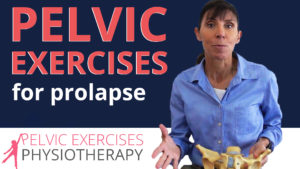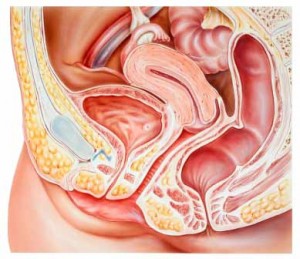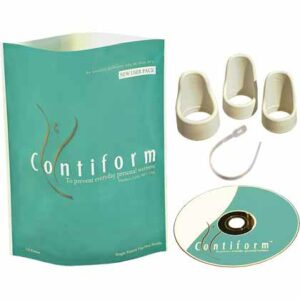
Kegel Exercises for Prolapse
Kegel exercises for prolapse can relieve symptoms and improve prolapse position if you have a mild to moderate pelvic organ prolapse. These exercises may also

Kegel exercises for prolapse can relieve symptoms and improve prolapse position if you have a mild to moderate pelvic organ prolapse. These exercises may also

Cystocele repair (bladder prolapse repair) is one of the most commonly performed types of prolapse surgery. Some women with cystocele problems remain active and largely

Are your suffering from prolapse anxiety? My good friend Sue just phoned me in tears, she had her first prolapse surgery late last year. She’d just

How severe is your prolapse diagnosis? Are you worried you may need prolapse surgery? Is your prolapse beyond repair without surgery? It‘s often confusing to

Are you trying to avoid pelvic prolapse surgery? Would you like to reverse your prolapse? This Physiotherapy prolapse information teaches you about: How to improve

How do you know if your Pessary fits correctly? How to avoid problems with a poorly fitting pessary? A well fitting pessary treatment for prolapse

These prolapse symptoms give you very useful information about whether your exercises may be overloading your pelvic floor. If you’ve had prolapse surgery this information

Your prolapse surgery recovery can be improved by knowing these simple prolapse surgery exercises and techniques. This article provides you with Physiotherapy exercises for prolapse

Pessaries are a great alternative to prolapse surgery for many women. Are you seeking to avoid prolapse surgery? Do you want to reduce your prolapse

The Knack is a very useful technique for women with pelvic floor problems. The Knack is an exercise that helps women: Control bladder leaks Protect

Pelvic Floor Physiotherapy Prolapse Exercise Guide These prolapse exercise guidelines help you strengthen your prolapse support and alleviate prolapse symptoms. Read on now to learn

Prolapse and exercise-related worsening of prolapse can be avoided. How do you choose safe exercises, manage your weight and maintain your fitness if you’ve been

Are you worried about your prolapse symptoms? Prolapse symptoms can vary from one woman to the next, often depending on the type and severity of

Bladder exercises help to decrease leakage and control bladder urgency. Bladder exercises are performed using muscles inside the pelvis known as pelvic floor muscles. These

What is Vaginal Prolapse ? Vaginal prolapse is a common condition with an estimated one in two women suffering from this condition. Read on now

Your approach to your prolapse surgery recovery, can set you up for a lifetime of positive habits, and enhanced health and wellbeing … and help

Bladder control training is a proven method of overcoming bladder problems and is used in clinical practice world wide. These12 bladder calming strategies will help

Pelvic organ prolapse self management involves prolapse exercises and ongoing prolapse protection strategies. Read on to learn the health professional answers and techniques for these

Once diagnosed with a prolapse (bladder prolapse, rectal prolapse or uterine prolapse) most women want to know how to protect their prolapse and stop it getting any worse.

Many women say they avoid exercise altogether for fear of embarrassing leakage. Some ladies continue to experience bladder problems with exercise despite their regular pelvic floor exercises.
A unique product called Contiform has just been made available again for Australia women. It is specifically designed to help women stay active and dry with activity and exercise.

Being diagnosed with a bladder prolapse comes as a shock to many women, even though bladder prolapse (also known as cystocoele) is a common occurrence in women. Bladder prolapse is commonly referred to as “dropped bladder” or “fallen bladder”. Read on to learn the answers to these commonly asked questions about bladder prolapse:

There are a number of key steps you can take to avoid recurrent pelvic organ prolapse, and this includes after vaginal surgery for uterine prolapse, prolapsed bladder (cytocoele) and bowel prolapse (rectocoele). The same protective principles apply to women after rectal prolapse surgery. This 6 minute video outlines the short and long-term practical strategies you can use to reduce your risk of repeat prolapse and further pelvic sugery.

Get set to learn some of the most effective fitness exercises for protecting your pelvic prolapse. This information applies to women with; uterine prolapse, prolapsed bladder (cyctocoele), rectal prolapse (rectocoele) and also after prolapse surgery (when you have your specialist’s approval to commence general fitness exercise).

Practical tips for decreasing bladder urgency for bladder control training. Learn 5 simple strategies and bladder control exercise to help you reduce bladder urgency, retrain your bladder and get to the toilet without bladder leakage

Expert physiotherapist insructional video with step-by-step guidance for improving long-term pelvic floor support and preventing pelvic floor dysfunction after pelvic floor surgery including hysterectomy and prolapse repair. Exercise instruction to help prevent and overcome bladder/bowel and repeat prolapse after a hysterectomy or prolapse repair.
© 2009-2024 Pelvic Exercises